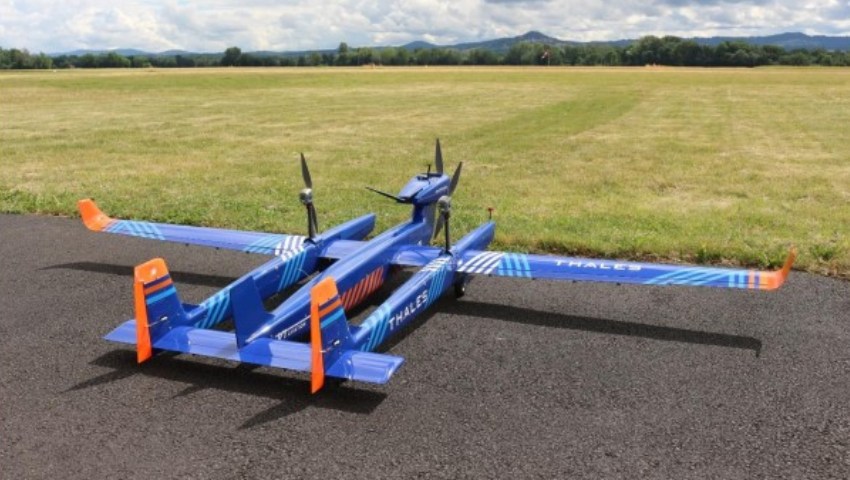Thales has successfully completed the first flight of a half-scale prototype of its UAS 100 long-range unmanned air system.
Developed in partnership with Issoire Aviation and Hionos, and with the support of the French Ministry of the Armed Forces via the Defence Innovation Agency (AID), UAS 100 will help meet demand for more cost-effective drone missions with a lower environmental impact.
Unmanned air systems have significant commercial potential, with hundreds of thousands of drones due to enter service over the next 10 years. As a result, airspace management and the aerospace ecosystem will become considerably more complex, creating new safety and security challenges and obliging civil aviation authorities to tighten their regulatory demands.
To meet these challenges, Thales is proposing a long-range, long-endurance UAS developed with the support of the AID and capable of meeting future flight safety, security and certification requirements.
According to Yannick Assouad, Thales executive vice-president, avionics, the UAS 100 aims to meet today's operational requirements, and the new system is a springboard for the air mobility solutions of tomorrow.
"With this new long-range UAS, Thales is providing the trusted solution needed for civil, government and military inspection and security applications," Assouad added.
The UAS 100 is designed to meet mission requirements while operating in full compliance with general aviation regulation – from infrastructure inspection, coastal surveillance, border surveillance and event security to search-and-rescue and military operations.
Its flight avionics combine Thales' certified levels of flight safety and security solutions for the aerospace sector with the low weight and compact design needed for integration on board a light UAV.
The UAS 100 system is designed to offer a range capabilities in excess of 100 kilometres and its jam-resistant navigation system will ensure safe operation even in dense or cluttered electromagnetic environments.
Powered by two electric motors and an internal combustion engine, the UAS 100 is designed for endurance and resilience to failure. It is aimed at discrete operation focused on accomplishing missions over populated areas.
The system will reduce operating costs and improve the environmental footprint of drones, opening up new opportunities for inspection and surveillance operations and expanding the capabilities of government services and the armed forces.
The innovation has been developed due to a close partnership between Thales, Issoire Aviation and Hionos. Issoire Aviation pioneered all-carbon aircraft and provided unique know-how in aerostructure design and manufacturing, while Hionos contributed to the project with its autopilot software solutions for drones.
The Thales UAS 100 solution is also designed to natively meet the requirements of the new European SC-LUAS (Special Condition - Light Unmanned Aircraft Systems) regulations.
[Related: Army receives two new CH-47F Chinook helicopters]








